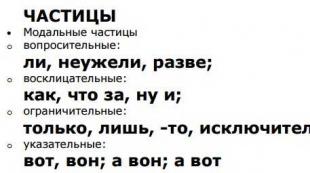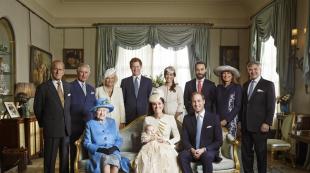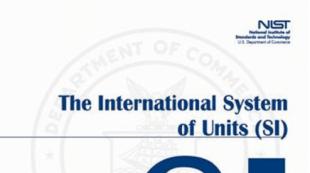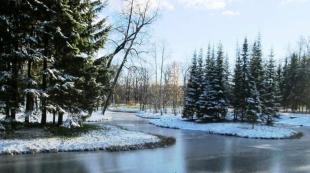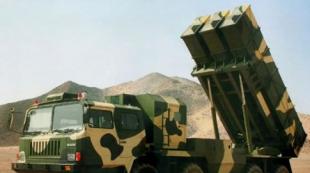What is written on the monument of eternal flame. An unknown soldier died here
During the First World War, a grave with a rough wooden cross appeared near the French city of Lille. Nobody knew who was buried here. On the cross was written in simple pencil: "Unknown British soldier." This grave would have sunk into oblivion if in 1916 it had not been seen by the English chaplain David Railton.
This is how he later described this moment: “How impressed I was with that grave! But who was this soldier, who were his comrades-in-arms? After all, he could well have been a very young boy? .. I had no answers to these questions, and there are none now. And I constantly thought and thought: what can I do to ease the grief that befell his father, mother, brother, sister, lover, spouse and friend? The answer came unexpectedly, as if from a fog, but I was firmly convinced that this was the best answer - “it is necessary with honors to transfer his remains across the sea to his native land". And I realized that this is the happiest moment of my life.”
The remains of the unknown soldier from Lille were never transported to their homeland, but the British government appreciated the idea of \u200b\u200ba monument to a simple unknown fighter. The remains for the memorial were selected very carefully: the creators wanted to be sure that a real English hero who died for his homeland would lie in the memorial grave, and not a random person. An unknown soldier of the British regular army was solemnly buried in Westminster Abbey on November 11, 1920.
- Tomb of an unknown British soldier in Westminster Abbey
- Wikimedia
A similar ceremony was taking place in Paris at the same time: a French nameless fighter found peace under triumphal arch. These two graves became the first monuments to the unknown soldiers.

- Tomb of the unknown French soldier under the Arc de Triomphe
- Wikimedia
It was not by chance that the idea of this kind of memorials appeared during the First World War. Of course, in the battles of previous centuries there were many unknown dead fighters, but in the Great (as it was then called) war, the phenomenon of namelessness reached frightening proportions.
The initiative of Great Britain and France was picked up all over the world: the graves of the unknown soldier appeared in Western Europe and Australia, Brazil and Indonesia, Zimbabwe and Iraq, Israel and Peru - the memory of hundreds of thousands of unknown heroes united the whole world. In the Soviet Union, such a monument appeared only in 1967.
No man is an island
The creation of a memorial to the unknown soldier in the USSR was discussed 20 years after the end of the Great Patriotic War- in 1965, after Moscow was awarded the title of Hero City. In fact, the monument received the right to exist by the efforts of one person - the first secretary of the Moscow City Party Committee Nikolay Grigoryevich Egorychev.

- Wikimedia
The government approved the idea of a national memorial, only Leonid Ilyich Brezhnev was against it: according to one version, he was afraid that the creation of the Tomb of the Unknown Soldier would raise Yegorychev's authority. Nikolai Grigorievich insisted that the monument should be erected under the ancient Kremlin walls, Brezhnev categorically objected to him. Another, probably at this stage, would have abandoned his idea, but Egorychev turned out to be very stubborn. He was ready to start construction on his own. But still, for such significant work, the consent of the Politburo was required, which the head of Moscow eventually received.
The soldier, according to tradition, was chosen carefully. Just at that time, a large mass grave was found in Zelenograd during a large-scale construction project. From there, the remains of an unknown soldier were removed in a well-preserved form, but without officer insignia.
Yegorychev himself explained the choice as follows: “If it were a deserter who had been shot, they would have taken off his belt. He could not have been wounded, taken prisoner, because the Germans did not reach that place. So it was quite clear that this was a Soviet soldier who died heroically defending Moscow. No documents were found with him in the grave - the ashes of this private were truly nameless.
With military honors
The solemn funeral of the Unknown Soldier took place on December 3, 1966. The coffin, entwined with an orange-black ribbon, was placed on a combat carriage and taken from the Kryukovo station to the Kremlin, accompanied by a guard of honor and a military band. On the final leg of the journey, he was accompanied by prominent members of the party and General Rokossovsky. The ashes of the Unknown Soldier were solemnly buried under an artillery salvo.

- The ceremony of burial of the remains of the Unknown Soldier, who fell in the battle near Moscow, near the Kremlin wall in Moscow.
- RIA News
The memorial was opened on the eve of Victory Day. On the morning of May 8, 1967, a solemn procession from Leningrad arrived in the capital. A crowd of Muscovites met an unusual cargo - a torch with Eternal Flame. He was taken in an armored vehicle from the Field of Mars to the Alexander Garden.
The eternal flame at the Tomb of the Unknown Soldier was lit by Brezhnev, taking the torch from the hands of the Hero Soviet Union Alexey Maresyev. So the Secretary General opened the architectural ensemble.

- Wikimedia
The monument is a tombstone covered with a bronze battle banner, on which lie a soldier's helmet and a laurel branch. In the center of the memorial, the Eternal Flame of Glory burns, next to it is the inscription: “Your name is unknown, your feat is immortal.”
In addition to the grave, the memorial includes a granite alley with pedestals of dark red porphyry, each with the name of the hero city and a chased image of the Gold Star medal. The cabinets contain capsules with earth from hero cities. The ensemble also includes a red granite stele in memory of the cities of military glory.

- Wikimedia
Post #1
On December 12, 1997, in accordance with the Decree of the President of Russia, the post No. 1 of the guard of honor was transferred from the Lenin Mausoleum to the Tomb of the Unknown Soldier. The guard is carried out by the military personnel of the Presidential Regiment.

- globallookpress.com
- Dmitry Golubovich
Every city that suffered in the Great Patriotic War keeps the memory of its nameless heroes. The glory of the Unknown Soldier spread throughout the country in hundreds of songs and poems, in commemorative plaques and memorials. The poetess Rimma Kazakova dedicated the following lines to the unknown heroes:
They covered their lives
barely begun to live,
For the sky to be blue
There was green grass.
Monday marks exactly half a century since the opening of the country's main war memorial - the Tomb of the Unknown Soldier in the Alexander Garden. About the history of this monument, as well as how it is being monitored now, in the TASS material.
History of occurrence
In the fall of 1966, the Central Committee of the CPSU proposed to create a memorial near the walls of the Kremlin - the Tomb of the Unknown Soldier - in memory of the heroes who fell in the battles of the Great Patriotic War. The reason for this idea was the 25th anniversary of the defeat of German troops near Moscow.
The remains of an unknown soldier were exhumed on December 2 from a mass grave near the former Kryukovo railway station. It was here at the end of 1941 that the offensive of the infantry and tank units of the Wehrmacht was stopped.
On December 3, 1966, the ashes in a coffin covered with a St. George ribbon were delivered to the capital. The procession, which consisted of a guard of honor and a group of war veterans, made its way from the Leningrad highway to Manezhnaya Square.
A funeral service followed. It was attended by Marshal of the Soviet Union Konstantin Rokossovsky, who commanded the 16th Army in the battles for Kryukovo. After the rally, the coffin was transferred to the Alexander Garden, where it was lowered into the grave under a volley of artillery salute.
Almost six months later, on May 8, 1967, the memorial itself officially opened at the burial site - the Tomb of the Unknown Soldier. The monument was designed by architects Dmitry Burdin, Vladimir Klimov, Yuri Rabaev and sculptor Nikolai Tomsky.
The inscription on the memorial was designed by the writer Sergei Smirnov, as well as the poets Konstantin Simonov, Sergei Mikhalkov and Sergei Narovchatov. According to the memoirs of Sergei Smirnov, in the end they chose the option proposed by Sergei Mikhalkov: "Your name is unknown, your feat is immortal."
In front of the tombstone, in a square recess, there is a bronze five-pointed star. The eternal flame in it was solemnly lit by the General Secretary of the Central Committee of the CPSU Leonid Brezhnev. This fire was delivered to Moscow from Leningrad - from the Field of Mars, where the memorial to the victims of the February and October Revolution.
And in December 1997, a permanent guard of honor appeared at the Tomb of the Unknown Soldier. The military personnel of the Presidential Regiment, who had previously served at the Lenin Mausoleum, began to be on duty at the memorial.
Reconstruction
In December 2009, the memorial was closed for renovation. For the period of preventive maintenance, the Eternal Flame with military honors was moved to Victory Park. Especially for this, a copy of the memorial star was installed on Poklonnaya Hill.
The burner of the copy has been strengthened and refined - taking into account the strong wind due to the open space. Two months later, the Eternal Flame returned to the Tomb of the Unknown Soldier.
The return ceremony took place on February 23, 2010. Two armored personnel carriers with temporary burners brought fire to the Alexander Garden. The flame at the Tomb of the Unknown Soldier was lit by Russian President Dmitry Medvedev.
The very same memorial of military glory was opened later - May 8, 2010. Its new element was a stele about 1 meter high and about 10 meters long with the names of cities of military glory (currently 40 cities).
Prevention
From the very first day, the specialists of Mosgaz have been servicing the Eternal Flame. They check the burner system in Alexander Garden every month. All work is carried out after 22:00, when the territory is closed for citizens and tourists.
Prevention at the memorial is also a solemn process, since in order to turn off the Eternal Flame, it is necessary to light its particle on a temporary burner. By its design, it is arranged in the same way as a permanent one. However, the gas here comes from portable cylinders. Thanks to them, the system can be offline for up to 10 hours.
After preparation, the Eternal Flame is turned off and a team of locksmiths gets to work. They dismantle the igniters, inspect and clean them from soot. The whole job takes 40 minutes.
Then the star and fire are returned to their place. After the device is assembled, the flame is ignited and extinguished several times to ensure that the system is working properly. And only after that turn off the temporary burner.
The Tomb of the Unknown Soldier is an architectural memorial ensemble in the city of Moscow, near the walls of the Kremlin, in the Alexander Garden. The center of the composition has been burning for 34 years. People come to the monument to bow to the fighter who gave his life for his Motherland.
Description
The tombstone is decorated with a bronze composition: a laurel branch and a soldier's helmet, reclining on the banner of military glory. In the center of the architectural composition is a niche made of labradorite, where the words are carved: "Your name is unknown, your feat is immortal." In the middle of the niche is a bronze five-pointed star, in which the Eternal Flame of military glory burns.
To the left of the burial there is a wall made of quartzite with the words written on it: "1941 fallen for the Motherland 1945". To the right of the grave is an alley of granite with blocks of dark red porphyry. Each of them depicts the Gold Star medal and the name of the hero city is inscribed: Kyiv, Leningrad, Odessa, Stalingrad, Minsk, Sevastopol, Smolensk, Murmansk, Tula, Brest, Novorossiysk, Kerch. The blocks contain capsules with earth taken from the listed objects.
FROM right side from the alley there is a stele made of red granite, on which the names of magpies are immortalized

Creation idea
In 1966, Muscovites prepared with special solemnity to celebrate the twenty-fifth anniversary of the defense of their city. The position of the first secretary of the Moscow City Party Committee at that time was occupied by Egorychev Nikolai Grigorievich. This man was one of the communist reformers who played an important role in the politics of the state.
The anniversary of the victory in the Great Patriotic War began to be celebrated with special pomp since 1965, after Moscow became a hero city, and May 9 was made a holiday, non-working day. It was then that the idea arose to erect a monument to ordinary soldiers who lost their lives during the defense of the capital. Egorychev decided to make this monument popular. In 1966, Nikolai Grigoryevich received a call from Nikolaevich and said that there was a Tomb of the Unknown Soldier in Poland, and suggested that such a monument be erected in Moscow. Egorychev replied that he was just considering this project. Soon the sketches of the memorial were shown to the first leaders of the country - Mikhail Andreevich Suslov and Leonid Ilyich Brezhnev.

Location selection
The Tomb of the Unknown Soldier is a monument close to the heart of every person. The choice of the site on which it will be located was given exceptional importance. Egorychev immediately suggested that a memorial be erected in the Alexander Garden, and there was just the right place. However, Brezhnev did not like this idea. The biggest obstacle was that in this area there was an obelisk created in honor of the tercentenary of the Romanov dynasty in 1913. After the coup of 1917, the names of the reigning persons were erased from the pedestal, and in their place the names of the revolutionary leaders were knocked out. The list of titans of the revolution was compiled personally by Vladimir Ilyich Lenin. And in the USSR, everything that was connected with this person was not allowed to be touched. However, Yegorychev took a risk, deciding to move the obelisk a little to the side without the highest approval. Nikolai Grigorievich was sure that he would not receive permission anyway, and the discussion of this issue would drag on for many years. Together with the head of the architectural department of the capital, Fomin Gennady, they moved the obelisk, so cleverly that no one noticed it. However, in order to start building global work, the approval of the Politburo was needed, which Egorychev received with great difficulty.

Search for remains
The Tomb of the Unknown Soldier in Moscow was intended for a soldier who died for his Motherland. Then large-scale construction was carried out in the city of Zelenograd, during which it was discovered with the remains of soldiers. However, the Politburo had many sensitive issues. Whose ashes to bury? What if it will be the remains of a German or a shot deserter? Now each of us understands that any person is worthy of prayer and memory, but in 1965 they thought differently. Therefore, all the circumstances of the death of the soldiers were subjected to a thorough check. We opted for the remains of a soldier on whom a military uniform survived (it did not have commander's insignia). As Yegorychev later explained, the deceased could not have been wounded and taken prisoner, because the Germans did not reach Zelenograd, the unknown was also not a deserter - the belt was removed from them before being shot. It was clear that the body belonged to a Soviet man who died heroically in the battle for the defense of Moscow. No documents were found with him, his ashes were truly nameless.
burial
The military developed a ritual for the solemn burial of an unknown soldier. The body of a soldier from Zelenograd was delivered to Moscow on a gun carriage. In 1966, on December 6, thousands of people stretched along Gorky Street from the very morning. They wept as the procession passed by. The funeral cortege reached Manezhnaya Square in mournful silence. The last few meters of the coffin were carried by leading members of the party, such as Marshal Rokossovsky. Yevgeny Konstantinovich Zhukov was not allowed to carry the remains because he was in disgrace. The Tomb of the Unknown Soldier, the photo of which you can see in this article, has become an iconic place that everyone aspired to visit.

Eternal flame
On May 7, 1967, a torch from the Eternal Flame was lit in Leningrad. By baton, the fire was delivered to the capital. They say that the whole way from Leningrad to Moscow was littered with people. On the morning of May 8, the procession reached the capital. The first to receive the torch at Manezhnaya Square was the legendary pilot, Hero of the Soviet Union, Alexei Maresyev. A unique newsreel that captured this moment has been preserved. People froze in anticipation of the most important event- Lighting the Eternal Flame.
The opening of the memorial was entrusted to Yegorychev. And Leonid Ilyich Brezhnev had a chance to light the Eternal Flame.
Commemorative inscription
Everyone who comes to the memorial sees the words at the Tomb of the Unknown Soldier: "Your name is unknown, your deed is immortal." This inscription has authors. When the Central Committee approved the project to create a monument, Yegorychev gathered the leading writers of the country - Simonov, Narovchatov, Smirnov and Mikhalkov - and invited them to compose an epitaph. They settled on the sentence: "His name is unknown, his feat is immortal." When everyone dispersed, Nikolai Grigorievich thought about what words each person would approach the grave with. And he decided that the inscription should contain a direct appeal to the deceased. Egorychev phoned Mikhalkov, and they came to the conclusion that the line that we can observe today should appear on the granite slab.

Nowadays
In 1997, on December 12, the Decree of the President of Russia was signed, according to which the guard of honor is moved from to the place where the Tomb of the Unknown Soldier is located. There is a changing of the guard every hour. In 2009, on November 17, in accordance with Presidential Decree No. 1297, the burial became the National Memorial of Military Glory. From December 16, 2009 to February 19, 2010, the monument was subject to reconstruction, in connection with which the guard of honor was not exhibited, and the laying of flowers at the Tomb of the Unknown Soldier was temporarily suspended. On February 23, 2010, the Eternal Flame was returned to the Alexander Garden, it was lit by Dmitry Medvedev, at that time the President of the Russian Federation.
Conclusion
The Tomb of the Unknown Soldier has become a symbol of mourning for all the soldiers who sacrificed their lives to save the Motherland. Everyone who was involved in the creation of this memorial felt that this work was the main thing in his life. We will disappear, our descendants will leave, and the Eternal Flame will burn.
Material from N.F. Fedorov
In memory of the heroism of Soviet soldiers during the Great Patriotic War, the Tomb of the Unknown Soldier memorial was erected in the Alexander Garden near the walls of the Kremlin in Moscow. On December 3, 1966, in honor of the 25th anniversary of the defeat of the Nazi troops near Moscow, the ashes of the Unknown Soldier were transferred from the mass grave at the 41st kilometer of the Leningrad Highway - places of bloody battles - and solemnly buried in the Alexander Garden. Then, at the burial site, a monument was erected, consisting of a number of architectural elements, designed by architects D. Burdin, V. Klimov, Yu. Rabaev and sculptor N. Tomsky.
The tombstone of the memorial grave, made of red quartzite blocks, is crowned with a bronze composition - a soldier's helmet and a laurel branch lie on a battle banner. In front of the tombstone there is a recessed platform lined with slabs of polished black labradorite and framed with red granite, in the center of which there is a bronze five-pointed star. An inscription is inscribed on the granite slab of the gravestone: "Your name is unknown, your feat is immortal." On May 8, 1967, the grand opening of the memorial architectural ensemble "Tomb of the Unknown Soldier" near the Kremlin wall took place in memory of the heroes who died during the Great Patriotic War. The Eternal Flame of Glory was lit on the grave, which breaks out from the middle of the bronze star. It was lit from the flame of the Eternal Flame on the Field of Mars in St. Petersburg. The torch with fire was delivered from Leningrad to Moscow on an armored personnel carrier. Throughout the journey, thousands of people came out to meet him. The sacred fire in Moscow was received by the Hero of the Soviet Union pilot A. Maresyev and handed the torch to L. Brezhnev, who lit the Eternal Flame at the "Tomb of the Unknown Soldier".
((#widget:YouTube|id=kmtxNQUoLN8|width=400px|height=300px))
To the right of the grave, on a granite pedestal along the Kremlin wall, there are blocks of dark red porphyry, under which the sacred land of hero cities from the places of bloody battles of the Great Patriotic War is stored in capsules. On each block there is the name of the hero city and a chased image of the Gold Star medal. To the left of the grave of the Unknown Soldier, the inscription is carved on the granite wall: "1941 TO THE FALL FOR THE HOMELAND 1945". On December 12, 1997, in accordance with the decree of the President of Russia, a permanent guard of honor post No. 1 was installed at the Eternal Flame on the Tomb of the Unknown Soldier. The guard is carried out by the fighters of the Presidential Regiment. In November 2009, the monument was given the status of the National Memorial of Military Glory. In accordance with the document, the entire architectural ensemble was included in the list of "especially valuable objects of cultural heritage" of the country. The memorial "Tomb of the Unknown Soldier" in Moscow is a place for laying wreaths and flowers on various holidays, it is visited by numerous delegations, including heads of foreign states and governments. Traditionally, the memorial is a place visited by tourists and honeymooners. Every year on May 9, celebrating the Victory Day, the whole country honors the memory of the dead with a minute of silence, flowers are laid at the Tomb of the Unknown Soldier.
By the Decree of the President of November 4, 2014, another Day of Military Glory was established - December 3, the Day of the Unknown Soldier.
- N.F. Fedorov. .
- N.F. Fedorov. .
- a monument-symbol in honor of the soldiers who died in battles. The first Tomb of the Unknown Soldier was built in Paris in memory of the victims of the First World War. The ceremony of its opening and lighting of the Eternal Flame took place on November 11, 1920. In Soviet Russia, the first memorial building in memory of the heroes who fell in the armed struggle against enemies during the February and October revolutions and civil war, was opened in the center of the Field of Mars in Petrograd (now St. Petersburg) on November 7, 1919 (the Eternal Flame has been burning since 1957).
The memory of the heroism of Soviet soldiers during the Great Patriotic War is immortalized by many memorial structures, including the graves of the Unknown Soldier in a number of cities across the country. In Moscow, the memorial Tomb of the Unknown Soldier was built in the Alexander Garden near the Kremlin wall. The ashes of the Unknown Soldier were brought here on the days of the 25th anniversary of the defeat of the Nazi troops near Moscow in 1966 from a mass grave from the 41st kilometer of the Leningrad Highway - the place of bloody battles.
On May 8, 1967, the memorial architectural ensemble "Tomb of the Unknown Soldier" was opened at this place and the Eternal Flame of Glory was lit, which breaks out from the middle of a bronze star placed in the center of a mirror-polished black square of labrador, framed by a platform of red granite. The torch was delivered from Leningrad, where it was lit from the Eternal Flame on the Field of Mars.
On the granite slab of the tombstone is inscribed: "Your name is unknown, your feat is immortal."
To the left of the tombstone is a wall of crimson quartzite with the inscription: "To those who fell for the Motherland. 1941-1945."
On the right is a granite alley, where blocks of dark red porphyry are located with capsules immured in them with the earth of hero cities: Leningrad (taken from the Piskarevsky cemetery), Kyiv (from the foot of the Obelisk to the participants in the defense of the city), Volgograd (from Mamaev Kurgan), Odessa (from the defense lines), Sevastopol (from the Malakhov Kurgan), Minsk, Kerch, Novorossiysk, Tula (the land was taken from the advanced defense lines of these cities) and the hero-fortress Brest (the land from the foot of the walls).
On each block there is the name of the city and a chased image of the Gold Star medal.
According to the order of Russian President Vladimir Putin, on the stone parapet near the tomb of the Unknown Soldier, the word "Volgograd" was replaced with "Stalingrad".
Further from the alley of hero cities in honor of the cities of military glory, opened in 2010. The monument is a block about 10 meters long, made of red granite. There are inscriptions on it - "Cities of military glory" and a list of names of the cities themselves.
The tombstone of the memorial grave is crowned with a voluminous bronze composition - a soldier's helmet and a laurel branch lying on a battle banner (installed in 1975).
By decree of the President of the Russian Federation of December 8, 1997, a permanent guard of honor from the Presidential Regiment was established at the Eternal Flame at the Tomb of the Unknown Soldier in Moscow. According to the document, the changing of the guard at the post takes place daily every hour from 8 am to 8 pm. In exceptional cases, at the discretion of the head Federal Service protection of the Russian Federation guard of honor can be exhibited at another time.
By decree of the President of Russia, in order to preserve the historical and cultural heritage of the peoples of the Russian Federation, the Tomb of the Unknown Soldier memorial was given the status of a National Memorial of Military Glory. It was included in the State code of especially valuable objects of cultural heritage of the peoples of Russia.
In the same year, the reconstruction of the memorial began. In connection with the work, the Eternal Flame was moved to Poklonnaya Gora in Victory Park on December 27, 2009. On February 23, 2010, after the completion of repair work, it was returned to the Kremlin wall.
On May 8, 2010, the National Memorial of Military Glory was solemnly opened after reconstruction.
Wreaths and flowers are laid at the Tomb of the Unknown Soldier in memory of those who died for Russia on the battlefields. Here, heads of delegations of foreign states pay tribute to the heroes during their visits to Russia.
AT last years a tradition was born: early in the morning on Victory Day, veterans of the Patriotic War and young people gather at Post No. 1 for a memorial watch with lighted candles in their hands.
The material was prepared on the basis of information from RIA Novosti and open sources
